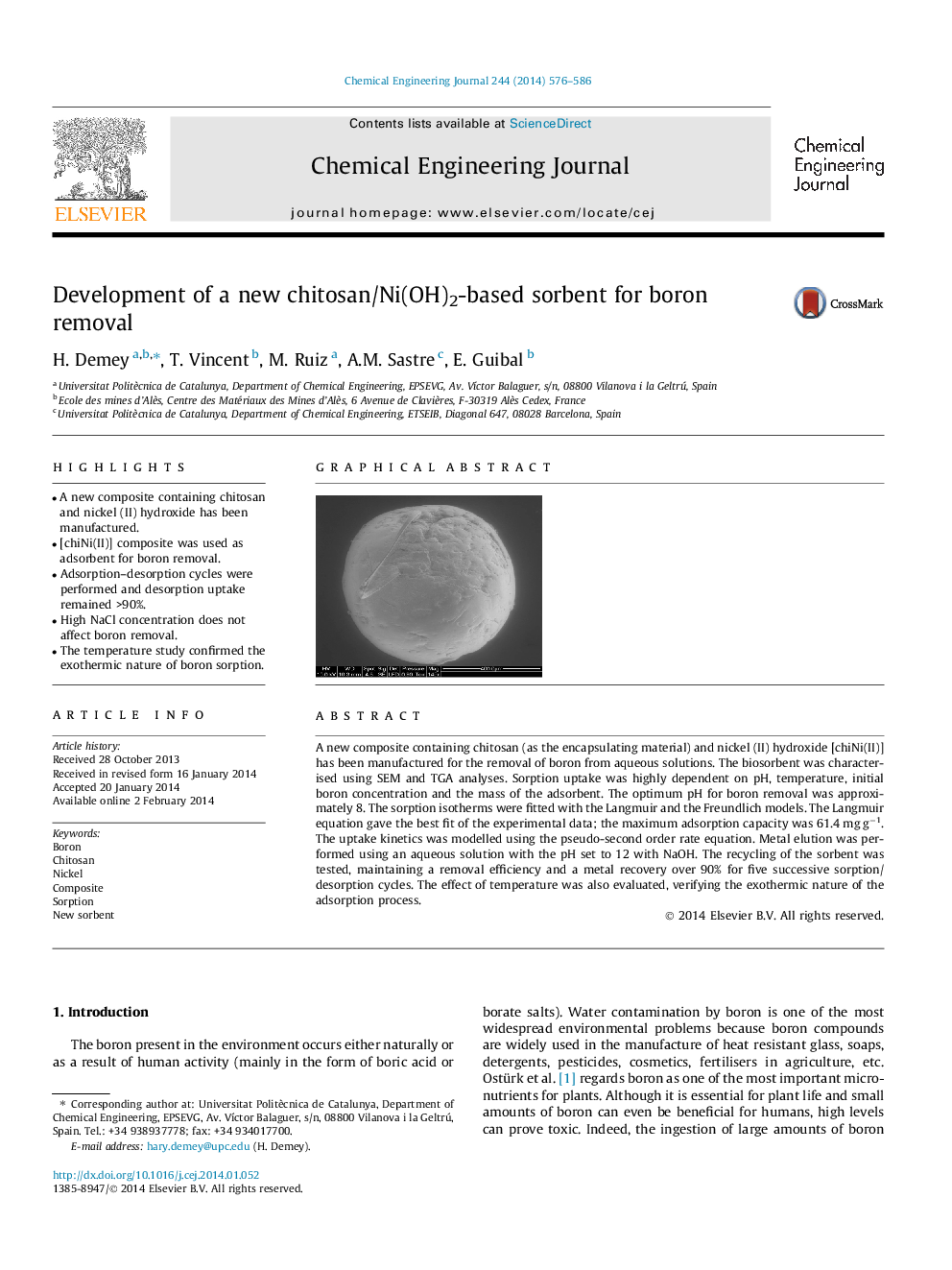| Article ID | Journal | Published Year | Pages | File Type |
|---|---|---|---|---|
| 147786 | Chemical Engineering Journal | 2014 | 11 Pages |
•A new composite containing chitosan and nickel (II) hydroxide has been manufactured.•[chiNi(II)] composite was used as adsorbent for boron removal.•Adsorption–desorption cycles were performed and desorption uptake remained >90%.•High NaCl concentration does not affect boron removal.•The temperature study confirmed the exothermic nature of boron sorption.
A new composite containing chitosan (as the encapsulating material) and nickel (II) hydroxide [chiNi(II)] has been manufactured for the removal of boron from aqueous solutions. The biosorbent was characterised using SEM and TGA analyses. Sorption uptake was highly dependent on pH, temperature, initial boron concentration and the mass of the adsorbent. The optimum pH for boron removal was approximately 8. The sorption isotherms were fitted with the Langmuir and the Freundlich models. The Langmuir equation gave the best fit of the experimental data; the maximum adsorption capacity was 61.4 mg g−1. The uptake kinetics was modelled using the pseudo-second order rate equation. Metal elution was performed using an aqueous solution with the pH set to 12 with NaOH. The recycling of the sorbent was tested, maintaining a removal efficiency and a metal recovery over 90% for five successive sorption/desorption cycles. The effect of temperature was also evaluated, verifying the exothermic nature of the adsorption process.
Graphical abstractFigure optionsDownload full-size imageDownload as PowerPoint slide
